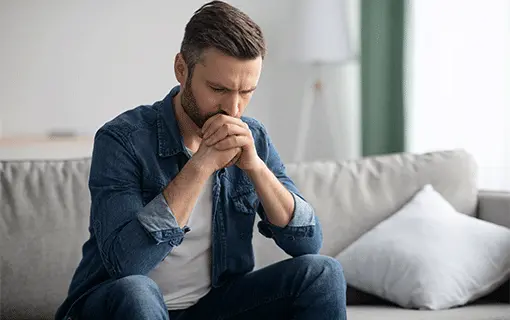Conditions / Iron Deficiency Anemia
Iron Deficiency Anemia

Overview
Iron deficiency anemia is the most common type of anemia and occurs when your body doesn’t have enough iron to produce adequate levels of hemoglobin—the protein in red blood cells responsible for carrying oxygen throughout the body. When hemoglobin levels are low, your tissues and organs don’t receive the oxygen they need to function properly. This can lead to symptoms like fatigue, weakness, and shortness of breath. While it can develop gradually and often goes unnoticed at first, untreated iron deficiency anemia can lead to more serious health issues. With proper diagnosis and treatment, most people recover fully and feel better quickly.
Symptoms
Symptoms can range from mild to severe depending on the extent of the iron deficiency. Common signs include:
• Fatigue or weakness: Feeling unusually tired or lacking energy.
• Pale skin: Especially noticeable in the face or inner eyelids.
• Shortness of breath: Difficulty breathing during physical activity.
• Cold hands and feet: A result of poor circulation.
• Headaches or dizziness: Caused by reduced oxygen to the brain.
• Chest pain or rapid heartbeat: The heart may work harder to circulate oxygen.
• Brittle nails or hair loss: Physical signs of a nutrient deficiency.
• Cravings for non-food items (pica): Such as ice, dirt, or starch.
When to see a doctor
Consult a healthcare provider if you experience:
• Persistent fatigue or weakness.
• Shortness of breath with everyday activities.
• Pale skin or cold extremities.
• Frequent headaches or feeling lightheaded.
• Cravings for substances that aren’t food.
Seek immediate medical attention for:
• Chest pain or rapid heartbeat.
• Severe shortness of breath.
• Signs of internal bleeding, like blood in stool or very heavy menstrual bleeding.
Causes
Iron deficiency anemia develops when iron stores are depleted. Common causes include:
• Inadequate dietary intake: Not consuming enough iron-rich foods.
• Blood loss: Due to heavy menstrual periods, gastrointestinal bleeding, surgery, or injury.
• Poor absorption of iron: Conditions like celiac disease, gastric bypass, or certain medications can interfere with iron absorption.
• Increased iron needs: Such as during pregnancy, growth spurts, or intense physical activity.
Risk Factors
Factors that increase the risk of developing iron deficiency anemia include:
• Being female: Especially due to menstruation or pregnancy.
• Infancy and childhood: Rapid growth increases iron demands.
• Older age: Poor diet and chronic diseases may interfere with absorption.
• Vegetarian or vegan diet: Without proper planning, these diets may lack enough iron.
• Chronic conditions: Such as ulcers, inflammatory bowel disease, or cancer.
Complications
If untreated, iron deficiency anemia can lead to:
• Heart problems: Including rapid heartbeat or heart failure.
• Pregnancy complications: Such as low birth weight or preterm delivery.
• Developmental delays in children: Affecting cognitive and physical growth.
• Weakened immune system: Making you more prone to infections.
• Reduced work or school performance: Due to fatigue and poor concentration.
Medical Risk
Iron deficiency anemia is typically treated with iron supplements, dietary changes, and addressing the underlying cause of the deficiency. Treatment options include:
• Oral iron supplements: Usually taken daily for several months.
• Dietary adjustments: Increasing intake of iron-rich foods (e.g., red meat, leafy greens, beans, fortified cereals).
• Treating the source of blood loss: Like managing heavy periods or gastrointestinal issues.
• Intravenous iron therapy: For those who can’t tolerate or absorb oral iron.
Possible risks and considerations:
• Side effects of iron supplements: Such as constipation, nausea, or stomach cramps.
• Iron overload (rare): Can occur with over-supplementation, especially if not monitored.
• Missed underlying conditions: Important to identify the root cause to prevent recurrence.
With proper care and follow-up, iron deficiency anemia is highly treatable, and most people can return to full health and energy.
Medications We Offer
At Thrivewell Infusion, we provide treatments for Iron Deficiency Anemia that restore iron levels, boost energy, and improve overall health.
• Feraheme
• Injectafer
• Monoferric
• Venofer
